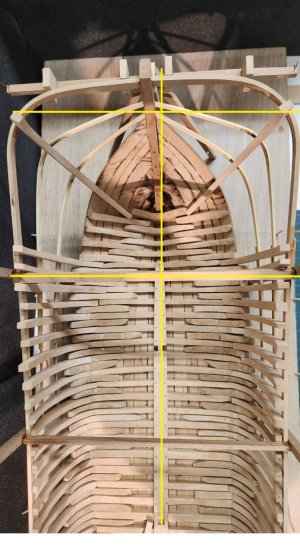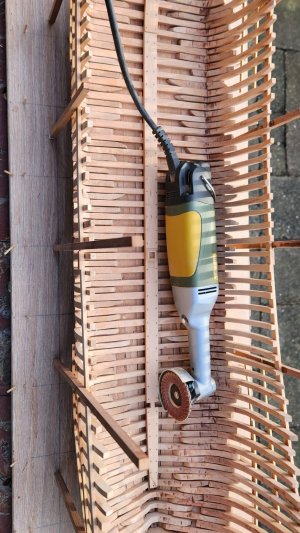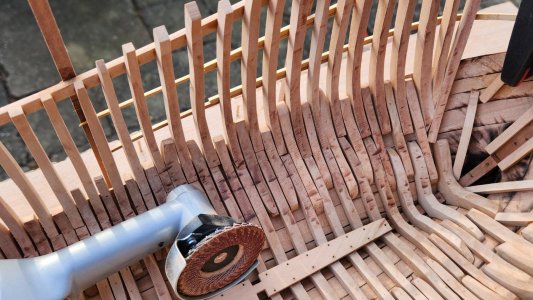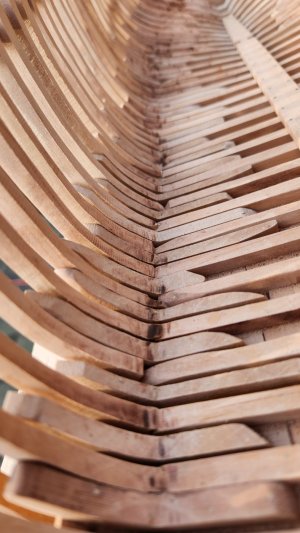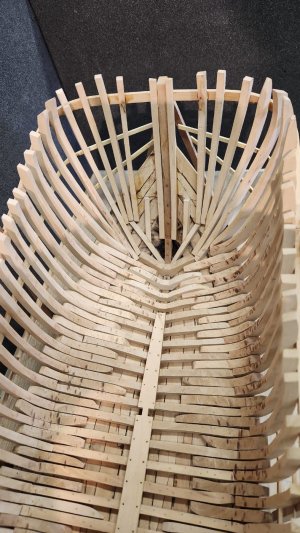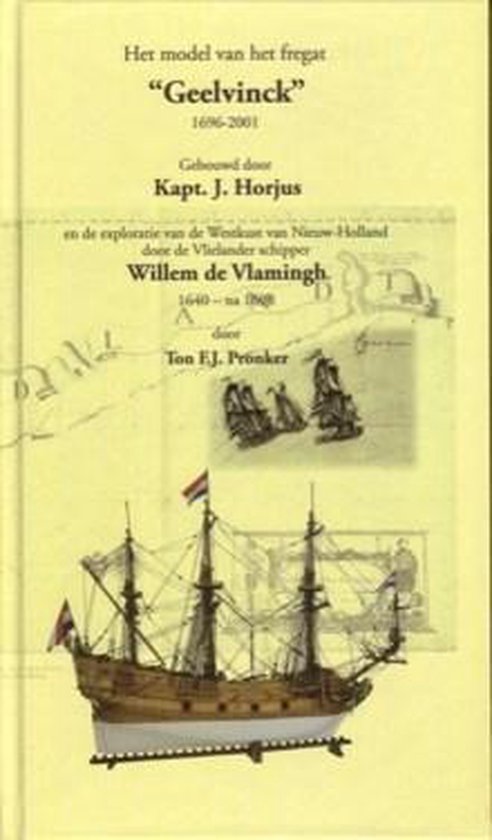The build up of the stern frames is comparable to the work on the bow. We do again have three reference surfaces being the stern post rabbet, the "scheerstrook" and the shape of the floor section. The shape of the stern section is totaly different from the bow and much more complex.
To setup the battens to shape the stern section I first created a futtock (oplang) which creates the outer edge of the hull shape at the stern. This oplang is rather long and fitted on the already installed floor planking and supported by the v shaped floor timber called "zogstuk".

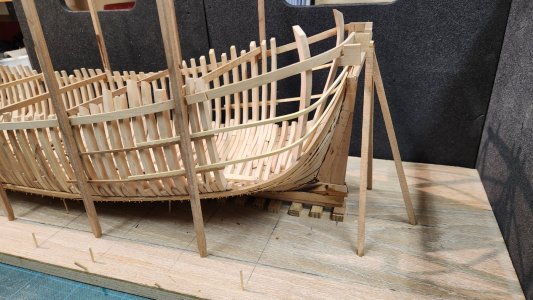
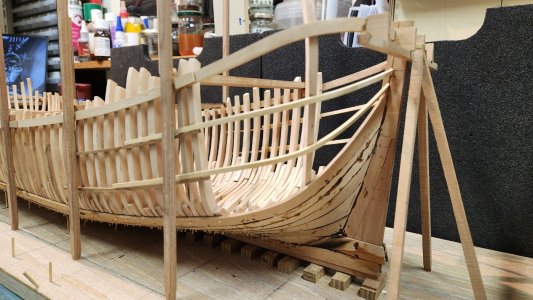
This oplang is nearly straight except for the curvature in the end to reach the scheerstrook. You can see this shape here in different angles on the Tallinn wreck.


The long straight oplang is visbile in another wreck of a fluyt called the Jutholmen wreck. The Jutholmen wreck is a small fluyt of which only the lower hull remain making the construction much better visible.
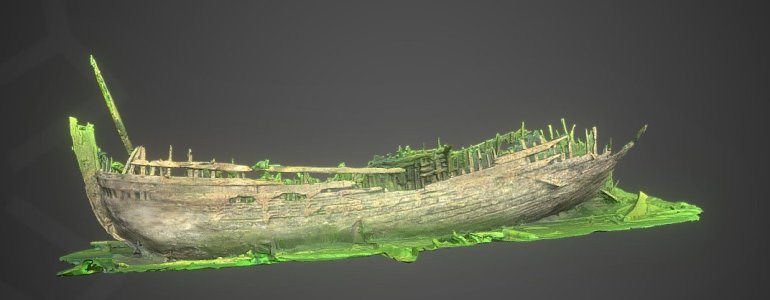
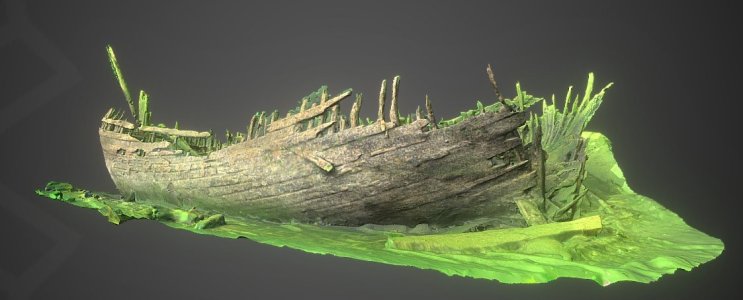
You can see such a futtock at the arrow. The stern is fallen apart and the sternpost is laying flat on the seabed behind the hull.
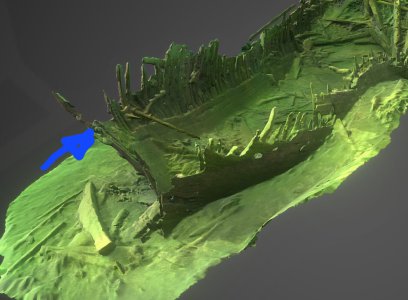
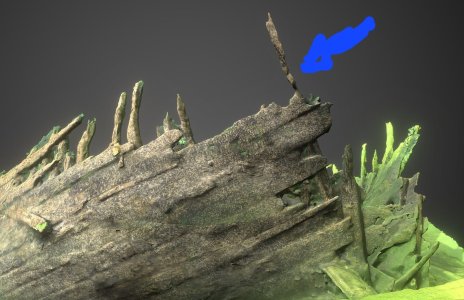
Also the set up of futtocks is different. In the bow the futtocks are simply placed on the horizontal floors which run up into the bow section enabled by its flat construction. In the stern the construction is different due to it v shaped floor.
Looking at the Jutholmen wreck from the top you see that the oplangen/futtocks in the sides of the ship are more or less parallel to each other and in the stern section they diverge from each other rotating aroung the foot of the sternpost.
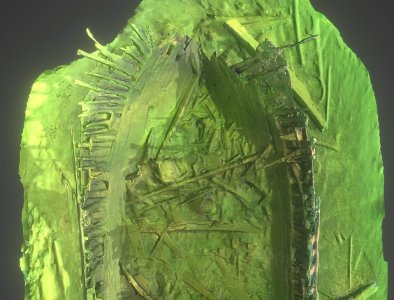
Another wreck I looked at to get a better picture of the stern construction is the Alvsnabbenvraket which is of a Dutch type ship of the 1700's probably a smack, kof or galjoot which had comparable stern shapes.

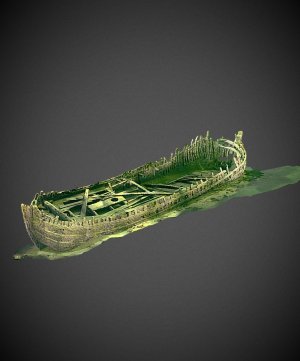
This wreck has lost its ceiling planks on one side which enables you to see the construction of the inner framing a little better.

Here you can see that the stern is build up from vertically place oplangen/futtocks only. There are no horizontally placed supports like with the floors in the bow construction.
As there is ample space in the stern not all these oplangen will start at the bottom but a lot will be fitted only to the planking higher up in the hull construction.
Unfortunately this we can't also see in this wreck.
Also we see on this wreck and on the Tallinn wreck that on both sides of the stern post also oplangen were fitted directly against the stern post.
The space between the two oplangen on both sides of the sternpost was filled with a simple plank against the inside of the stern post which can be clearly seen on the Tallinn wreck.
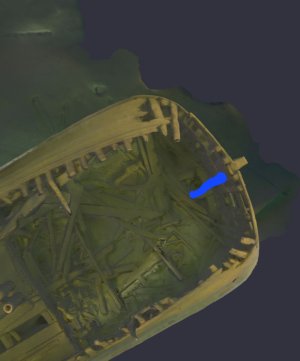
The result of all this is the start of the oplangen in the stern.

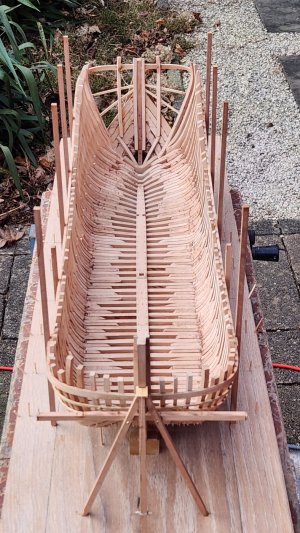
And some pictures of the hull outside in daylight.
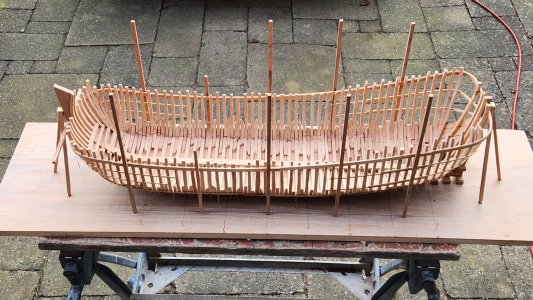
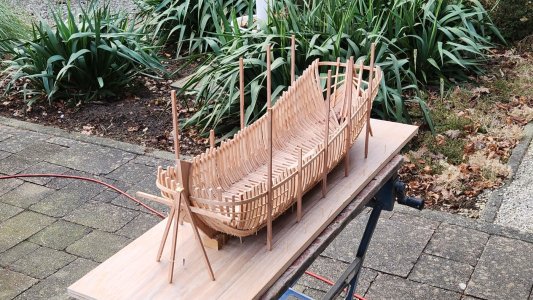
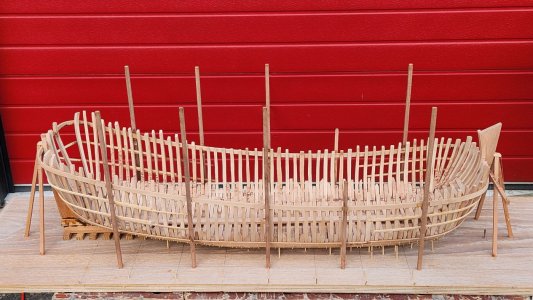
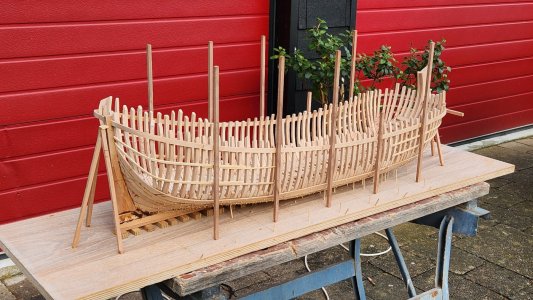

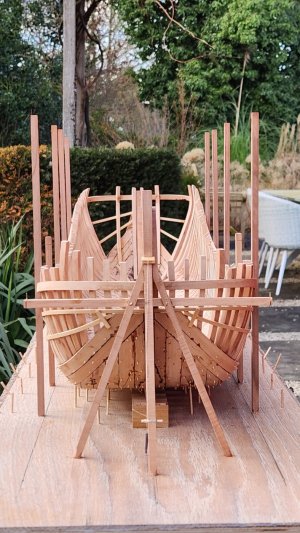
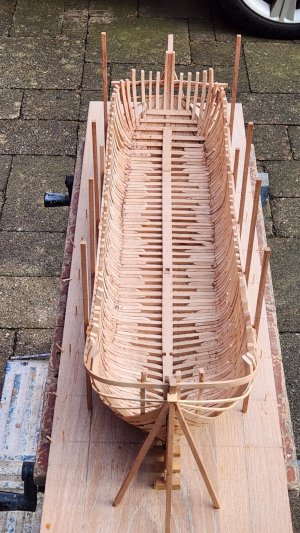
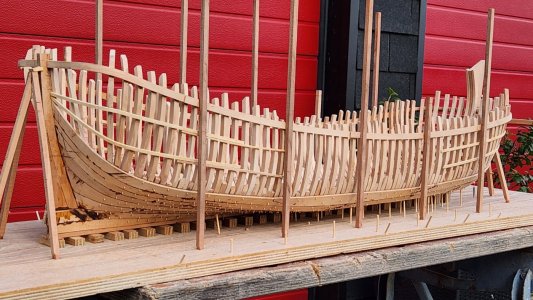
To setup the battens to shape the stern section I first created a futtock (oplang) which creates the outer edge of the hull shape at the stern. This oplang is rather long and fitted on the already installed floor planking and supported by the v shaped floor timber called "zogstuk".



This oplang is nearly straight except for the curvature in the end to reach the scheerstrook. You can see this shape here in different angles on the Tallinn wreck.


The long straight oplang is visbile in another wreck of a fluyt called the Jutholmen wreck. The Jutholmen wreck is a small fluyt of which only the lower hull remain making the construction much better visible.


You can see such a futtock at the arrow. The stern is fallen apart and the sternpost is laying flat on the seabed behind the hull.


Also the set up of futtocks is different. In the bow the futtocks are simply placed on the horizontal floors which run up into the bow section enabled by its flat construction. In the stern the construction is different due to it v shaped floor.
Looking at the Jutholmen wreck from the top you see that the oplangen/futtocks in the sides of the ship are more or less parallel to each other and in the stern section they diverge from each other rotating aroung the foot of the sternpost.

Another wreck I looked at to get a better picture of the stern construction is the Alvsnabbenvraket which is of a Dutch type ship of the 1700's probably a smack, kof or galjoot which had comparable stern shapes.


This wreck has lost its ceiling planks on one side which enables you to see the construction of the inner framing a little better.

Here you can see that the stern is build up from vertically place oplangen/futtocks only. There are no horizontally placed supports like with the floors in the bow construction.
As there is ample space in the stern not all these oplangen will start at the bottom but a lot will be fitted only to the planking higher up in the hull construction.
Unfortunately this we can't also see in this wreck.
Also we see on this wreck and on the Tallinn wreck that on both sides of the stern post also oplangen were fitted directly against the stern post.
The space between the two oplangen on both sides of the sternpost was filled with a simple plank against the inside of the stern post which can be clearly seen on the Tallinn wreck.

The result of all this is the start of the oplangen in the stern.


And some pictures of the hull outside in daylight.














